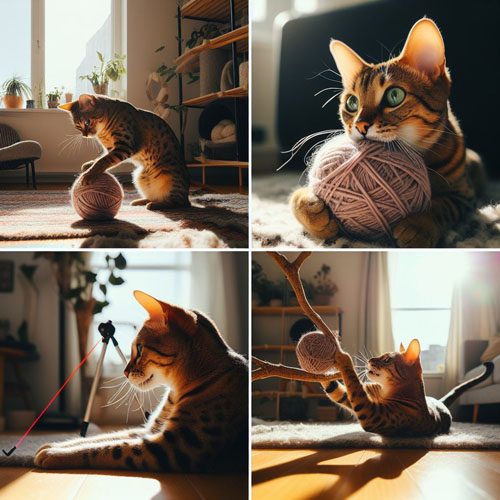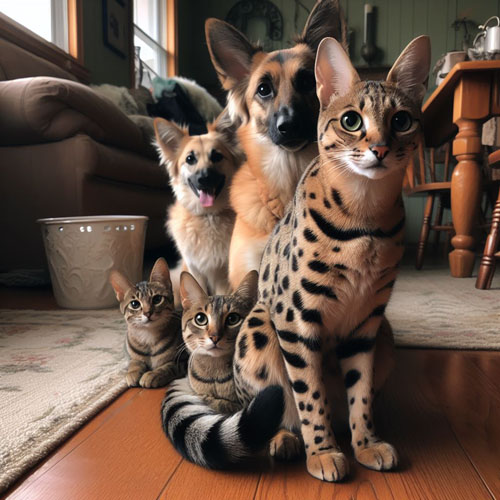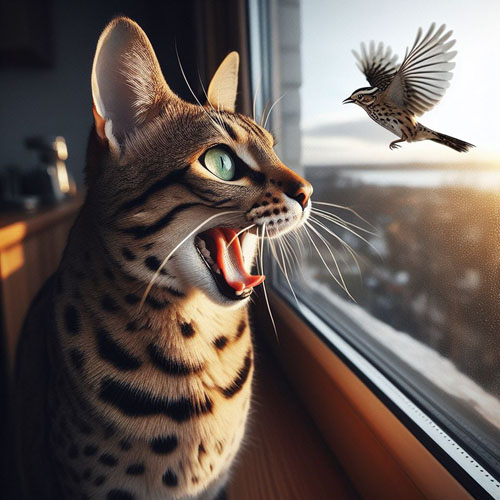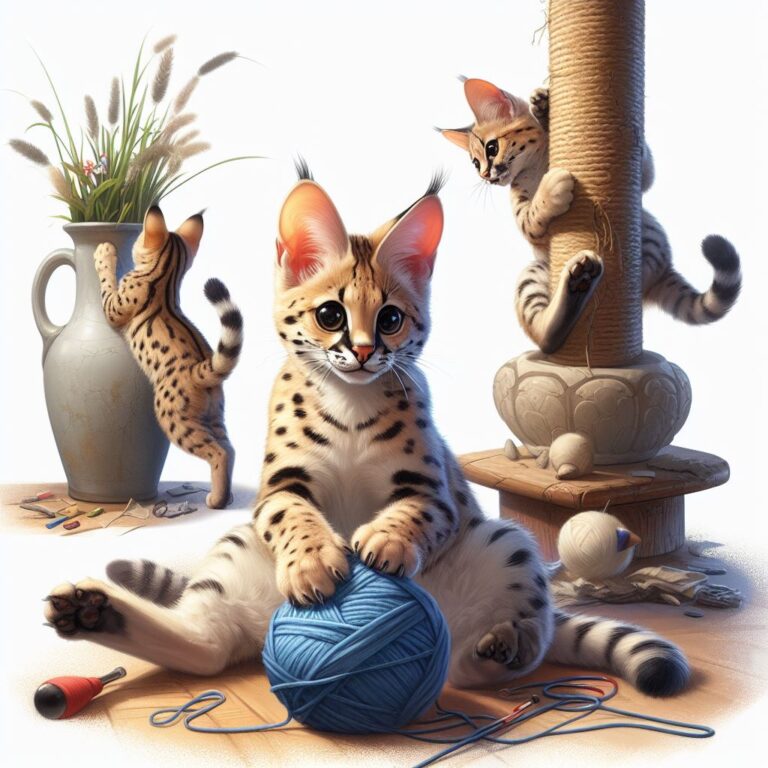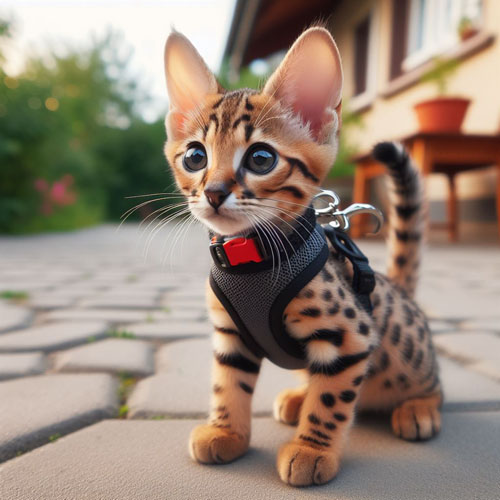Unlocking Obedience: Training Your Savannah Cat with “No,” “Off,” and “Come Here”
Savannah cats, with their wild ancestry and unique characteristics, bring a touch of the exotic into our homes. While their playful and energetic nature is endearing, establishing a foundation of obedience through training is essential for a harmonious relationship. In this guide, we’ll explore effective methods for training Savannah cats in three crucial commands: “No,” “Off,” and “Come Here.”
Understanding Savannah Cat Behavior: Before diving into training techniques, it’s crucial to understand the behavior of Savannah cats. These feline companions are known for their intelligence, curiosity, and a touch of wildness inherited from their serval ancestors. While this adds to their charm, it can also present challenges in terms of training.
Savannah cats thrive on mental and physical stimulation. They are quick learners and respond well to positive reinforcement. However, their independent streak may require a patient and consistent approach to training. Establishing a strong bond based on trust and positive interactions is key to successful training sessions.
Setting the Stage for Training: Training a Savannah cat requires a calm environment and the right tools. Choose a quiet space free from distractions, and ensure you have tasty treats as rewards. Savannah cats are often motivated by food, so finding a treat that excites them can be a game-changer in training.
Additionally, use short training sessions to maintain your cat’s interest. Aim for sessions lasting no more than 5-10 minutes to keep the experience positive and enjoyable. Consistency is crucial, so try to incorporate training into your daily routine.
1. Teaching “No” – Setting Boundaries
Training your Savannah cat to understand the command “No” is essential for establishing boundaries and keeping both your pet and your belongings safe. Here’s a step-by-step guide to teaching “No”:
- Start with a calm and focused demeanor. Cats can pick up on your energy, so it’s important to be patient and composed.
- When your cat engages in an undesirable behavior, such as scratching furniture or attempting to access restricted areas, firmly say “No” in a clear and assertive tone.
- Immediately redirect their attention to an appropriate activity or toy. For example, if they are scratching furniture, guide them to a scratching post.
- Consistently reinforce the “No” command each time they engage in the undesirable behavior.
- Reward positive behavior with treats and praise. Positive reinforcement is key to reinforcing the desired response.
Remember that patience and consistency are paramount. Over time, your Savannah cat will associate the “No” command with certain behaviors and learn to modify their actions accordingly.
2. Teaching “Off” – Respect for Boundaries
The command “Off” is valuable for preventing your Savannah cat from jumping onto countertops, tables, or other surfaces where their presence may not be welcome. Follow these steps to teach “Off”:
- Start by placing a treat on the ground. When your cat approaches the treat, say “Off” and gently guide them away.
- Use a consistent hand signal, such as a downward motion with your hand, to reinforce the command.
- Reward compliance with treats and praise. Make sure to offer the treat at ground level, reinforcing the positive behavior of staying off elevated surfaces.
- Repeat the training process consistently, gradually reducing the need for the treat as your cat becomes familiar with the command.
Consistency is key, and positive reinforcement will help your Savannah cat understand that complying with the “Off” command results in positive outcomes.
3. Teaching “Come Here” – Building Connection
The “Come Here” command is essential for calling your Savannah cat to you, promoting a strong bond and ensuring their safety in various situations. Follow these steps to teach “Come Here”:
- Start in a quiet, comfortable space with minimal distractions.
- Crouch down to your cat’s level, extending your hand and using a calm and inviting tone.
- Say “Come here” while gently patting the ground or offering a treat.
- When your cat approaches, reward them with treats and affectionate praise.
- Gradually increase the distance between you and your cat, continuing to use the “Come Here” command.
The key to successful “Come Here” training is making the experience positive and rewarding. Gradually extend the distance and practice the command in various environments to reinforce the behavior in different contexts.
General Tips for Savannah Cat Training
- Use Positive Reinforcement: Savannah cats respond well to positive reinforcement, such as treats, praise, and affection. Rewarding desired behaviors increases the likelihood of their repetition.
- Be Patient and Consistent: Training takes time, especially with independent-minded cats. Be patient, and consistently reinforce commands to build a strong association.
- Keep Sessions Short and Engaging: Short, focused training sessions are more effective than long, tedious ones. Keep your cat engaged and interested by incorporating play and treats.
- Choose the Right Treats: Find treats that truly motivate your Savannah cat. Experiment with different flavors and textures to discover their favorites.
- Respect Their Limits: Every cat has its own pace of learning. If your cat seems stressed or disinterested, it’s important to respect their limits and try again later.
- Use Clicker Training: Clicker training can be effective with Savannah cats. Associate the sound of a clicker with positive reinforcement to mark desired behaviors.
Conclusion
Training a Savannah cat requires a combination of patience, understanding, and positive reinforcement. By incorporating these techniques and commands into your routine, you can build a strong foundation for obedience while strengthening the bond between you and your exotic feline friend. Remember that every cat is unique, so tailor your approach to your Savannah cat’s individual personality and preferences. Through consistent and positive training, you’ll unlock the full potential of your Savannah cat as a well-behaved and delightful companion.
